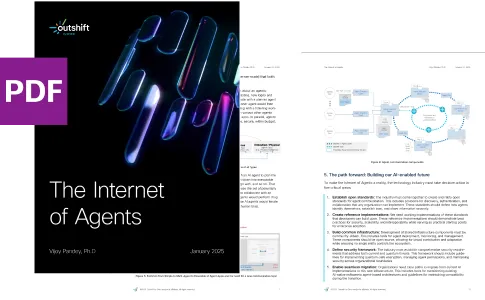So, you want to learn to fly? A good place to start would be a flight simulator. But if you begin your pilot training with a full-featured simulated cockpit of an Airbus A380 — the largest passenger airliner in the world — chances are you’ll be overwhelmed by complexity.
Today, application developers and DevOps teams face an analogous challenge. As businesses step up their adoption of cloud-native architectures to meet the demand for digital transformation, the tools developers use to manage this complex work are themselves overwhelmingly complex.
Much of this complexity derives from distributed microservices — the building blocks of modern applications. To manage the connectivity, security and observability of these distributed microservices, customers rely on a tool called a service mesh. But the various service mesh offerings on the market today (such as the open source Istio) do little to alleviate the pain point of complexity.
They are like flight simulators loaded with mind-boggling user interfaces and more bells and whistles than the user knows what to do with. They require deep skill sets and steep learning curves. Sure, they might teach you how to fly eventually, but the road to mastery is an arduous one. There must be a better way!
Cisco Calisti: frictionless squared
Cisco’s answer to this challenge is the recently launched Cisco Calisti. Like so much else that the company is doing these days — from providing a smooth onramp to the cloud, to securing the digital workplace, to the naming of its products and services — the underlying ethos of Calisti has to do with streamlining and simplicity.
This philosophy of frictionless is embedded not just in the product itself but in the entire product journey. That includes how users navigate to the product website, sign up, download the binary, deploying the product, and more. We’re even making Calisti available for free to anyone who wants to try it — the first free-tier offering in Cisco’s history.
Try Cisco Calisti free. Download it here.
Why a service mesh?
Microservices are complex by nature. Microservice-based applications are created with software functionality that is spread across multiple services that can be deployed independently. This has compelling advantages for developers. For example, it makes microservices easier to maintain and test, and it allows them to be more rapidly updated.
But as these services scale, microservices application architectures can get very complex, very fast, often running across multiple clusters both on premises and in the cloud.
A service mesh is essential for managing these architectures, allowing customers to connect, control, and observe microservices. The result is consistent development, deployment, security, and scalability with little or no changes to the application code.
How Cisco Calisti is different
The key differentiators of Cisco Calisti give developers and DevOps teams added power, flexibility, and freedom. They include the following:
- Single pane of glass. Where Istio requires separate installations of tools for different tasks, such as, metrics, topology, tracing, Calisti allows administrators to manage microservices from a single pane of glass. This gives easy visibility into the traffic flow across services and allows admins to switch between live and historical views.
- Multi-tenancy and segregation. While, other service mesh provider support a single gateway per mesh, Cisco’s Calisti supports multiple gateways. This is a powerful benefit for Managed Service Providers (MSPs) servicing multiple customers. It allows the MSP to create a gateway for each customer and to segregate each customer’s traffic. Keeping to aviation analogies, imagine an air-traffic controller at a busy airport that assigns different flight paths and gateways to different streams of air traffic — commercial flights, cargo flights, and so on — in order to better control them. Similarly, the benefits of multi-tenancy support for MSPs include greater security, manageability, troubleshooting, and again less friction.
- Synchronous and asynchronous messaging. Today, solution providers for managed Istio are optimized for synchronous messaging (think of this as the request/reply pattern of microservices talking to each other). Calisti is the first and only solution that supports both synchronous and asynchronous messaging within a single kubernetes cluster. The solution provides this asynchronous component through Apache Kafka services running on top of the same Kubernetes cluster. The benefits of this feature include greater efficiency and IT cost optimization. There’s also a sustainability component because there’s no need to run another set of infrastructure or another mesh.
- Multi-primary control plane support. Service meshes are typically deployed one per cluster. But Calisti allows admins to create a single mesh for multiple clusters, each with its own separate — and synchronized — control plane. The synchronization of resources between different clusters comes courtesy of a Cisco innovation known as a cluster registry. For comparison, imagine a global news service that simultaneously runs the same service (such as a news website) in multiple different regions — the EU, North America, and APAC, for example. Once deployed in the EU, the cluster registry automatically deploys the service in the other two regions, eliminating the need to re-deploy and providing redundancy if the service goes down in one region. Without Calisti, this would be an enormously heavy lift manually. With it, inputting a single command line handles all that complexity. The result: highly available infrastructure optimized for running highly distributed applications in an efficient and frictionless way.
There’s not much that’s simple about piloting a commercial jet, but the tools you use to learn shouldn’t add to the complexity. The same can be said for managing microservices with a service mesh. Cisco Calisti will help you get airborne faster and with less friction.
The sky’s the limit. What are you waiting for?
Download Cisco Calisti here. We’d love to hear your feedback.





